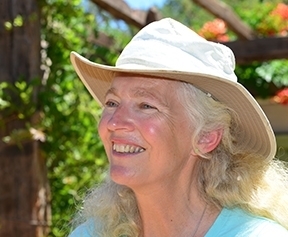
A spectacular pollinator garden that's a "must-see" is Kate Frey's pollinator garden at Sonoma Cornerstone.
Kate Frey, a world-class pollinator garden designer, pollinator advocate and author who addressed the UC Davis Bee Symposium in March on "Designing Bee Friendly Gardens," has created a masterpiece. And yes, the pollinator garden is open to the public--no admission fee.
We visited the garden last Saturday and saw a pipevine swallowtail nectaring on Nepeta tuberosa, yellow-faced bumble bees sipping nectar from Stachys bullata, hummingbirds scoring nectar from salvia, and honey bees foraging on everything from Scabiosa "Fama Blue" to a native milkweed, Asclepias speciosa.
This is a happy place.
As she told the crowd at the Bee Symposium, hosted by the UC Davis Honey and Pollination Center and the UC Davis Department of Entomology and Nematology: Whether you plant them, nurture them, or walk through them, bee gardens make us happy.
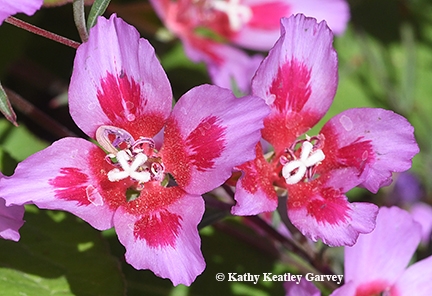
Frey's sign at the Sonoma pollinator garden explains that "All the plants offer food resources of pollen and nectar for pollinators such as native bees, honey bees, hummingbirds and beneficial insects. Pollen is a protein, mineral and fat source and is primarily a larval food for bees, while nectar is composed of various sugars and is the main food for pollinators and the adult life stage of many beneficial insects. Pollinators need a continuous food source for many months of the year. This garden contains a range of plants that will bloom in succession from early spring to late fall."
Frey's sign also noted that "Pollinators all have preferred plants they feed from, and flowers cater to specific pollinators. Some flower shapes are designed to exclude unwanted pollinators. The long, constricted floral tubes of honeysuckles or many salvia exhibit their focus on hummingbirds as primary pollinators. Other flowers nectar, like coffee berry is easily accessible to all pollinators. This garden contains a wide range of plants to appear to a variety of pollinators. Over 80 percent of flowering plants require insect or animal pollination. What insects or birds do you see visiting each flower type?"
Well, let's see: bees, butterflies, and birds...Apis mellifera, Battus philenor, Bombus vosnesenskii, Papilio rutulus, Calypte anna...
"The same plants that support pollinators," Frey indicated on the sign, "also make us happy."
They do! Happiness is a pollinator garden...
Attached Images:
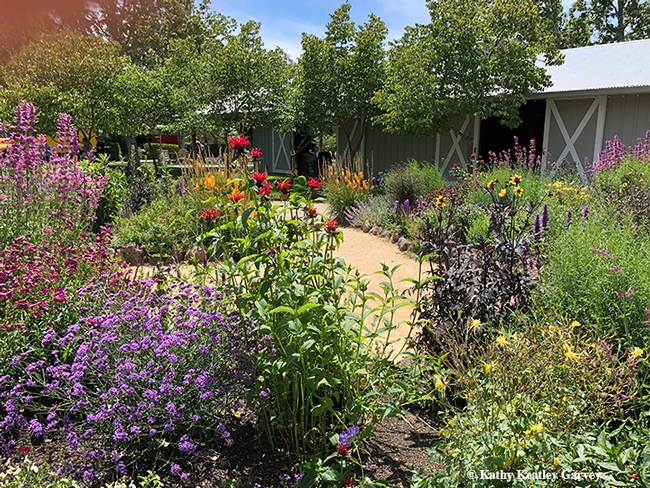
This is an overview of part of Kate Frey's pollinator garden at Sonoma Cornerstone. (Photo by Kathy Keatley Garvey)
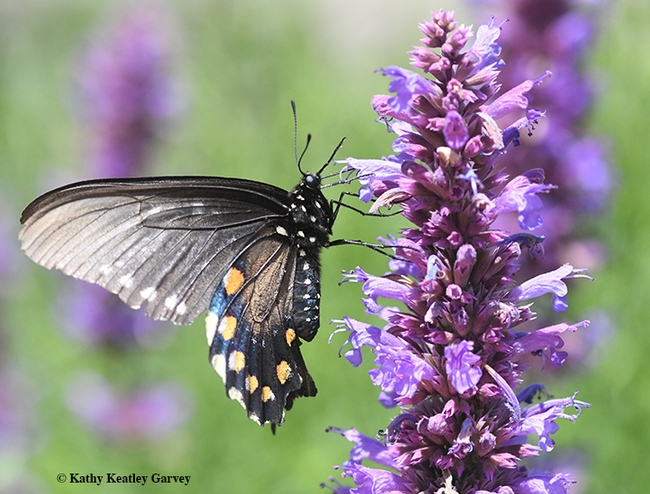
A pipevine swallowtail, Battus philenor, nectars on on Nepeta tuberosa. (Photo by Kathy Keatley Garvey)
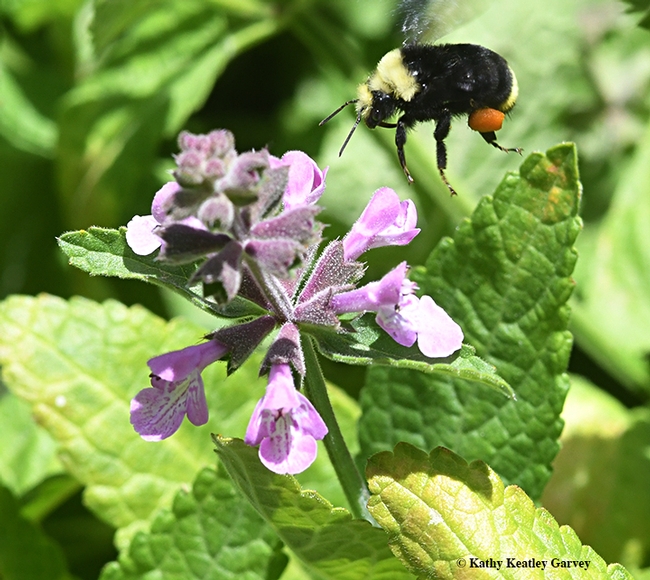
A pollen-packing yellow-faced bumble bee, Bombus vosnesenskii, heads for Stachys bullata. (Photo by Kathy Keatley Garvey)
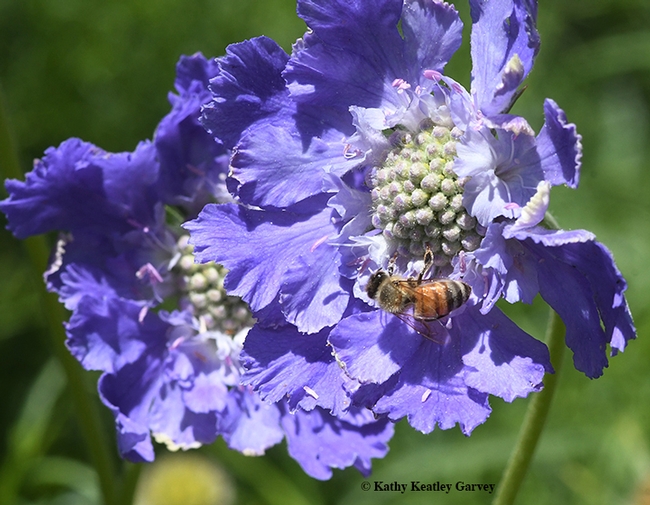
This honey bee can't get enough of Scabiosa "Fama Blue." (Photo by Kathy Keatley Garvey)
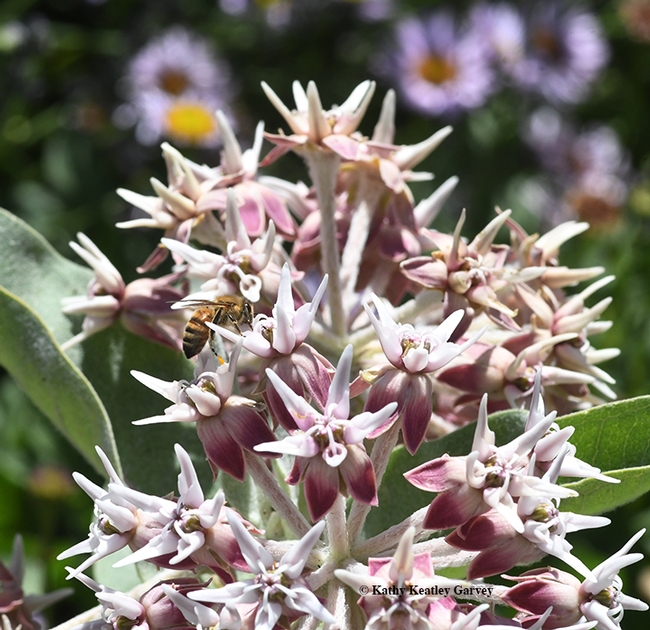
Milkweed is not only the host plant of monarch butterflies, but honey bees like it, too. This is the showy milkweed, Asclepias speciosa. (Photo by Kathy Keatley Garvey)